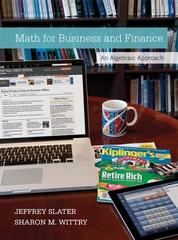
1. (7 Marks) A nightclub owner has both students and other adults as customers. The demand for drinks by a typical student is Q, = 36-6P. The demand for drinks by a typical other adult is Qo = 20 -4P. There are equal numbers of students and other adults. The marginal cost of cach drink is $4. Assume the club owner is able to implement first degree price discrimination personalized pricing) using two-part pricing, charging an entrance fee of Es to students and Eo to other adults as well as a price per drink of py to students and po to other adults. (a) (2 Marks, Analytical) What is the students' participation constraint? What is the other adults participation constraint? Provide a graphical illustration of the potential consumer surplus for each of these two groups (students and other adults). (b) (2 Marks, Analytical and Verbal) What is the club owner's profit maximisation problem, assuming that the owner chooses prices and en- trance fees for students and other adults? Do the two participation con- straints bind in equilibrium? Why or why not? (c) (3 Marks, Analytical and Verbal) Derive the optimal price for drinks to both students and other adults as well as the optimal entrance foos for students and other adults, respoctively. 2. (4 Marks, Analytical) Now, consider the same market as the one described under question #1, except now the club owner cannot distinguish each cus tomer's type (cannot distinguish who is a student and who isn't). What type of pricing strategies could be/she adopt to extract rents from consumers, with- out relying on uniform pricing? Derive the corresponding solution and compare it to the one obtained under question #1, point (c), also by providing an ap- propriate graphical illustration for this case. Discuss your results. 3. (6 Marks) Mrs Liu is the only tailor in town. Her shop is located in the middle of the town. There are 1, 000 customers who are evenly distributed along the main street of the town which is one mile long. Each customer needs a custom made/tailored dress or a suit, requiring cach of them to visit the store, for measurements to be taken, thereby incurring a transportation cost of $5 per mile for each unit of distance away from the store. Each customer's reservation price is $50. Each tailor-made dress/suit costs $20 to be produced. (a) (2 Marks, Analytical) What is the highest level of price that Mrs Liu can charge each customer provided she serves them all? Provide a graph- ical illustration for this result. (b) (4 Marks, Analytical and Verbal) What is the profit-maximizing price charged by Mrs Liu, when not imposing the constraint of having to serve the entire market? Given your results, is it profit-maximizing for her to serve the entire market? Provide a graphical intuition for your results








